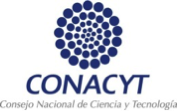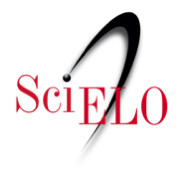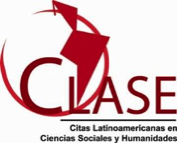The Path of the Formula: The Use of Thiourea for Cleaning Silver
DOI:
https://doi.org/10.30763/Intervencion.Rev1_Art10Keywords:
thiourea, science, office, restoration, investigationAbstract
The use of thiourea for the cleaning of silver cultural heritage has not been absolutely convenient. Apart from having a 0-pH, as a result from the presence of clorhidric acid, which affects the conservation of the constituent materials, the bibliography indicates that its residues cannot be completely eliminated, that it forms secondary by-products, and that it might cause superficial micro-fissures. Hence, this article critics its use, as an example of the application of materials, that by habit –without investigating its consequences, its mechanisms of action, its interactions, and its secondary by-products– have lead to serious mistakes in the intervention. It additionally analyses the profesional attitude that can place restoration as an art-craft: an activity that prioritizes manual skills and the application of formulas over the self-reflection and investigation. It concludes that a scientific thinking is indispensable for the discipline development.
Downloads
References
Barger, Susan, A. P. Giri, William B. White y Thomas M. Edmondson
“Cleaning Daguerreotypes”, Studies in Conservation 31 (1):15-28.
Barger, M. Susan, S. V. Krishnaswamy y Russell Messier
“The Cleaning of Daguerreotypes: Comparison of Cleaning Methods”, Journal of the American Institute of Conservation 22 (1): 13-24.
Baez Vicke, Margarita, et al.
“Informe de los trabajos de restauración realizados a la colección del Museo Nacional de Historia, vajilla Christofle y un revólver”, documento mecanoescrito del Seminario Taller de Metales, Escuela Nacional de Conservación, Restauración y Museografía, México, ENCRyM-INAH.
CAMEO
Conservation & Art Material Encyclopedia Online, Museum of Fine Arts, Boston, documento electrónico
disponible en http://cameo.mfa.org, consultado en mayo de 2008.
Chemicalland
Thiourea (Thiocarbamide), AroKor, Holdings, documentoelectrónico disponible en http://chemicalland21.com/industrialchem/organic/THIOUREA.htm, consultado en mayo de 2008.
“The Reaction of Thiourea to Dicyandiamidine Sulfate on Silver Surfaces Investigated by Reflection-Absorption Infrared Spectroscopy”, Fresenius, Journal of Analytical Chemistry 365 (5):465-466.
Landi, Sheila
The Textile Conservator ,s Manual, Londres, Butterworth-Heinemann.
Plenderleith, Herbert y Alfred Emil A. Werner
The Conservation of Antiquities and Works of Art: Treatment, Repair, and Restoration, Oxford, Oxford University
Press.
ReCollections
Caring for Cultural Material, documento electrónico disponible en http://amol.org.au/recollections/2/5/03.htm, consultado en agosto de 2004.
Rudoe, Judy
“Oxidized Silver in the Nineteenth Century: The Documentary Evidence”, en Susan La Niece y Paul Craddock (eds.), Metal Plating and Patination: Cultural, Technical and Historical Developments, Londres, Butterworth-Heinemann, 161-170.
Šramek, Jirí, Tove B. Jakobsen y Jirí B. Pelikan
“Corrosion and Conservation of a Silver Visceral Vessel From the Beginning of the Seventeenth Century”, Studies in Conservation 23 (3): 114-117.
Stambolov, Todor
“Removal of Corrosion on an Eighteenth-Century Silver Bowl”, Studies in Conservation 11 (1): 37-44.
The PubChem Project
The PubChem Project, documento electrónico disponible en http://pubchem.ncbi.nlm.nih.gov, consultado en mayo de 2008.
Tímar-Bálázsy, Ágnes y Dinah Eastop
Chemical Principles of Textile Conservation, Londres, Butterworth-Heinemann.
Wharton, Glenn
“The Cleaning and Lacquering of Museum Silver”, Newsletter of the Western Association of Art Conservation 11 (1):4-5.
Additional Files
Published
How to Cite
Issue
Section
License
Copyright (c) 2014 Intervención, Revista Internacional de Conservación, Restauración y Museología

This work is licensed under a Creative Commons Attribution-NonCommercial 4.0 International License.

Atribución-NoComercial 4.0 Internacional
https://creativecommons.org/licenses/by-nc/4.0/deed.es
Usted es libre de:
- Compartir — copiar y redistribuir el material en cualquier medio o formato
- Adaptar — remezclar, transformar y construir a partir del material
Bajo los siguientes términos:
-
Atribución — Usted debe dar crédito de manera adecuada, brindar un enlace a la licencia, e indicar si se han realizado cambios. Puede hacerlo en cualquier forma razonable, pero no de forma tal que sugiera que usted o su uso tienen el apoyo de la licenciante.
-
No Comercial — Usted no puede hacer uso del material con propósitos comerciales.




















